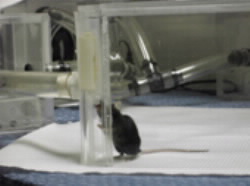EMBARGOED FOR RELEASE
ACS News Service Weekly PressPac: August 19, 2010
Biosensors on four feet detect animals infected with bird flu
Embargoed for release: Tuesday, August 24, 7 p.m., Eastern Time
Blood hounds, cadaver dogs, and other canines who serve humanity may soon have a new partner — disease detector dogs — thanks to an unusual experiment in which scientists trained mice to identify feces of ducks infected with bird influenza. Migrating ducks, geese, and other birds can carry and spread flu viruses over wide geographic areas, where the viruses may possibly spread to other species. Reported here today at the 240th National Meeting of the American Chemical Society (ACS), the proof-of-concept study may pave the way for development of biosensors-on-four-feet that warn of infection with influenza and other diseases.
“Based on our results, we believe dogs, as well as mice, could be trained to identify a variety of diseases and health conditions,” said U.S. Department of Agriculture scientist Bruce A. Kimball, Ph.D., who presented the study results. “In fact, we envision two broad, real-world applications of our findings. First, we anticipate use of trained disease-detector dogs to screen feces, soil, or other environmental samples to provide us with an early warning about the emergence and spread of flu viruses. Second, we can identify the specific odor molecules that mice are sensing and develop laboratory instruments and in-the-field detectors to detect them.”
Kimball and colleagues from the Monell Chemical Senses Center trained inbred mice to navigate a maze and zero in on infected duck feces. The mice got a reward of water every time they correctly identified the infected sample and no reward when they zeroed in on feces from healthy ducks. Eventually, the mice became experts at identifying feces from infected ducks.
![]()

Chemical Senses Center.
Contact
Science Inquiries: Michael Woods, Editor, 202-872-6293
General Inquiries: Michael Bernstein, 202-872-6042


